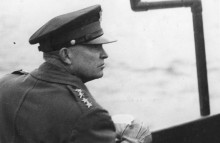Not many of us associate the two words “leadership” and “solitude.” That’s why I was intrigued by a review of the new book, “Lead Yourself First.” The essence of the review is that leaders need solitude to have the chance to “percolate” and “marinate” in his or her own feelings and to step out of events and locate the sacred space where he or she can reflect on what’s going on inside himself, thus attaining the moral and emotional conviction necessary to act.
In the review, Andrew Stark makes many interesting points, saying, for example:
Former Campbell Soup CEO Doug Conant runs into it in his garden. For entrepreneur Sarah Dillard, it’s to be found when she’s hiking. Tim Hall, a cycling coach, grabs some of it while gazing out at his bird feeder over coffee every morning. The pastor Jimmy Bartz encounters it while fly fishing.
What they are discovering, as Raymond M. Kethledge and Michael S. Erwin report in “Lead Yourself First,” is solitude, a vitally necessary but all too scarce commodity for organizational leaders. It’s scarce because, even more than the rest of us, leaders get bombarded 24/7 by attention-demanding memos, tweets, texts, emails, phone calls, videoconferences and hallway button-holings.
It’s necessary because only with some alone-time can leaders hope to gain a “sense of control” over all that incoming information, as communications officer Jaya Vadlamudi tells the authors. Only by herself, she says, can she hope to “whittle” such stimuli down to the essentials and reach clarity. Or as the Schwab executive Peter Crawford puts it: Solitude makes it possible to engage in the mental equivalent of “stripping away all the cookies on a computer. Once they’re cleared, my mind works better.”


